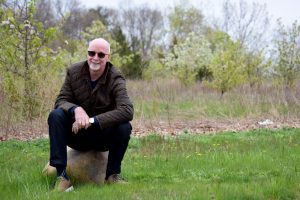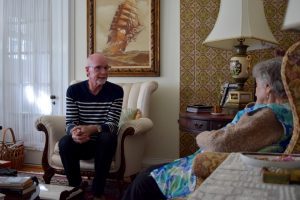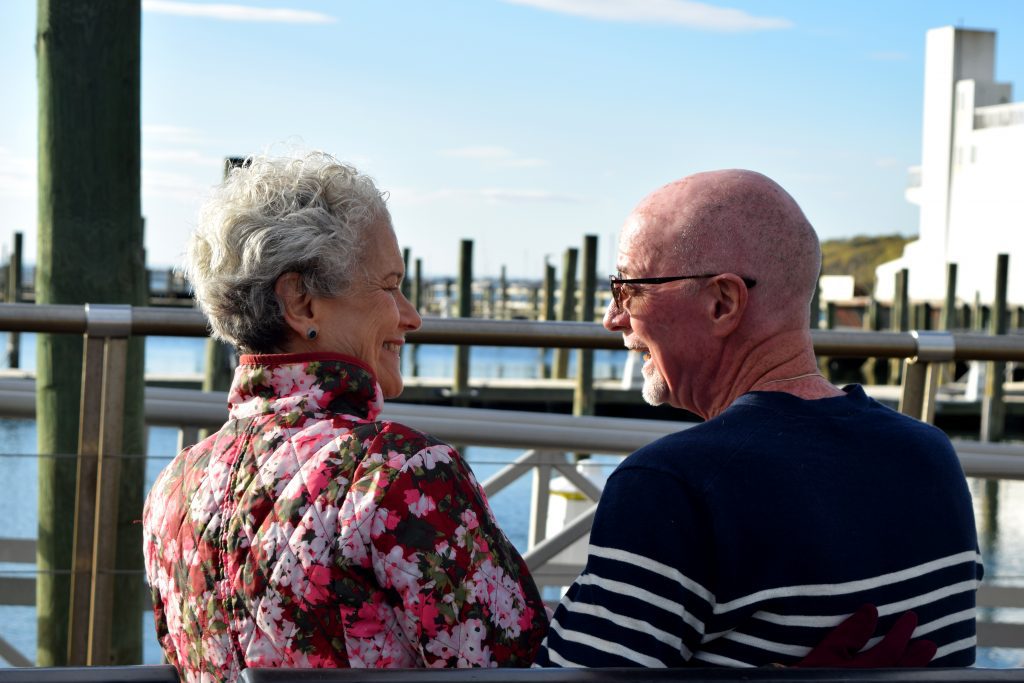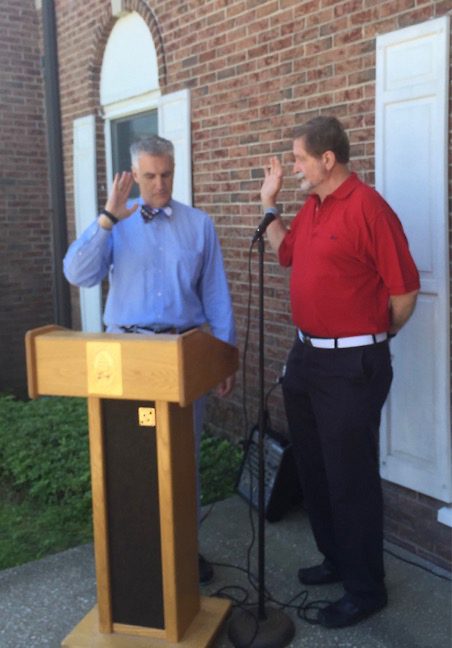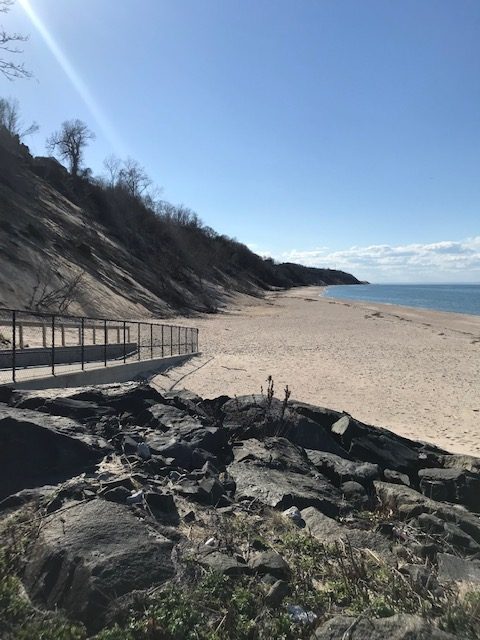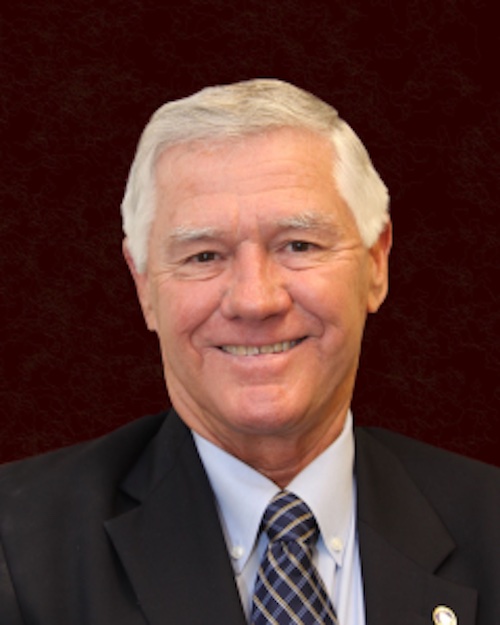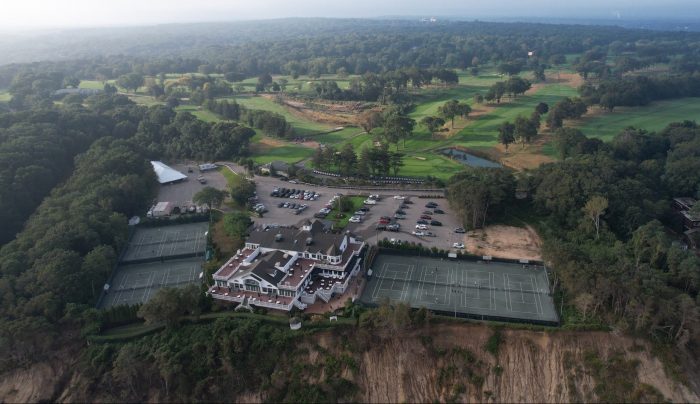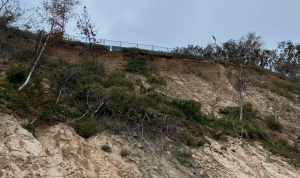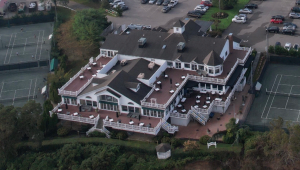Lauren Sheprow, former media relations officer at Stony Brook University and daughter of the former village mayor Hal Sheprow, is running for trustee. During an exclusive interview last week, Sheprow addressed her family’s background in village politics, her experience in media relations, Upper Port revitalization, the East Beach bluff and more.
What is your background and why would you like to be involved in village government?
I’ve been working my entire life in public relations, communications and media relations — that’s about a 40-year career. I most recently was working at Stony Brook University as the Chief Media Relations Officer and prior to that I was at Mather Hospital and the public relations director for that hospital. I enjoyed those jobs immensely.
I retired from the University officially on December 31 and didn’t initially consider or think about running for trustee. My father was the mayor of Port Jefferson during a timeframe of 1979 until 1994. He was a trustee before that and a planning board chairman prior to that in the village of Port Jefferson. He also was an EMS and ambulance person for the Port Jeff ambulance. As I was growing up in that household with my siblings — I have a sister and five brothers — we all watched that, we saw him do that and it had a big impression on me. It was ingrained in me that it was an important thing to give back to the community.
It had been in the back of my mind for a while that I did want to do something, whether it be as trustee or to do something in a different realm. I did not have time to do that while I was working at Stony Brook because that was a 24/7 job and I would never have had the time it takes to run for trustee, let alone serve.
When I learned about and was reminded that these two seats are up for reelection, I started really thinking about it and thought that I could contribute based on my historic perspective because I grew up here and went to the schools here from pre-K to graduation. My children attended Port Jeff schools. I have twin girls who graduated in 2010 and a son who graduated in 2015.
I’ve done a lot of volunteer work here and I’ve learned a lot about working within organizations to help things grow and improve and just foster community excellence. I was a youth baseball coach for the village of Port Jefferson, volunteered on the Port Jefferson recreation committee and I was appointed to the Country Club Advisory and Management Council. Now I am the president of the Tuesday Tournament Group, which is actually a league that’s run as a board-run program. That’s a lot of work, too.
All that said, the point is I’ve been giving a lot of my time and I’ve been noticing and recognizing where there are opportunities for the village to see strategic growth and opportunities for impact and change.
What are your key takeaways from your father’s time in public office?
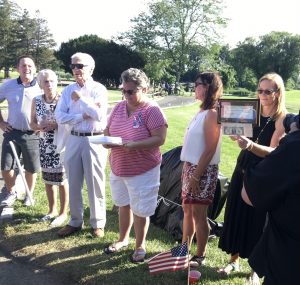
My father’s legacy of community involvement has always had a tremendous influence on my choices in life. He juggled so much — with help from my mother, of course. He was first and foremost an aeronautical engineer at [Northrop] Grumman, which is what brought us to Long Island in the first place. He also served, largely as a volunteer, as mayor, trustee, planning board chair and on the ambulance company as a volunteer EMS.
He had such a tremendous impact on this community with the annexation of the Hill Crest, Pine Hill, Ellen Drive, Laurita Gate and Jefferson’s Landing developments, and the acquisition of the country club being his two most significant contributions.
I hope to be able to emulate his community service and give back by being elected as a trustee of Port Jefferson village.
How is your background in media relations applicable to the work of a trustee?
I really feel like as a trustee, one of the most important things you can do is communicate to your constituency and communicate in a way that is transparent, concise, responsive and addresses the questions you are getting with answers and then potentially solutions.
At Stony Brook and at Mather Hospital, we had numerous inquiries and activities that had to be addressed at the same time. It was like drinking from the fire hose at Stony Brook, so you had to prioritize, you had to find the information that was going to be responsive to the questions you were getting from all angles — including from faculty, from administration, from students and from the media. We were responsive and accountable to everyone, and we had to do it in a way that was with the consensus of leadership.
We needed to get answers quickly, accurately and comprehensively. That really trained me for a lot of adversity. It trained me to work in a calm and thorough manner, not to be driven by agendas or a sense of urgency, but to be driven by getting the information you need that is right, accurate and has the consensus of the people who are working on the things you’re trying to learn about.
I think that bringing that skill set to a position on the Board of Trustees in Port Jefferson will help me really dig into some of the issues that are being expressed by villagers right now and look for solutions that are supported by facts, law and the code. The code really defines how you can move through a process, so I think relying on the code and the law is a really important part of what it means to be a public official.
In the same way that at Stony Brook that I would ask as many questions as I could and get as many responses from as many different sources as I possibly could to make sure the response is accurate, concise and responsive, I would do the same in this position as trustee and follow up and communicate in the same way I have done my entire career.

What are the most critical issues facing the village?
I think the most interesting things that are happening right now are the revitalization of uptown Port Jefferson, one. Two, what’s happening at the country club right now. I see opportunities in both areas. And the Mather Hospital project is another very interesting issue that’s going on right now. Those are three of the most important things going on in the village right now.
In terms of the uptown Port Jefferson revitalization, the progress that’s going on there is tremendous. There’s a lot of interest from new developers. Attending the meetings of the Board of Trustees and following the progress, what I have learned is that there are new developers coming forward to propose new projects and to me that’s very exciting. Shovels in the ground means progress and creates excitement. It fosters the axiom that, “If you build it, they will come.” I believe that’s happening right now.
The other issue or opportunity I see is bringing the country club back to all village residents. What I would love to work on is bringing the country club back to the community so that the community can enjoy it, not just as a golf course but as a place to foster a social and cultural environment. That’s what the purpose of the country club acquisition was originally, it’s in the original documentation. Let’s go back to the future and find a way to welcome all residents back to enjoy that facility in the way it was meant to be enjoyed.
And I’ll touch on the bluff for a second: the bluff and the country club are not one and the same. The bluff is village property. The village has got to safeguard its property, it’s got to safeguard those beaches and that groin. There is a roadway down to East Beach and there is a groin between that roadway and the country club parking lot. As the erosion continues, that groin will fail and you will lose access and you will lose the beach. That is one of the things that will happen if that bluff were not restored.
It’s the village’s responsibility to take care of that property and this is the best way to do that right now. To me, it’s a no-brainer. And it’s not to preserve the building. It’s to preserve village property, the safety and security of village property. That’s what the role of the Board of Trustees is: to preserve and keep safe for the residents of the village, the property and the community.
As trustee, my commitment is to get to the bottom of the issues at hand and proactively engage concerned villagers in the process.
— Lauren Sheprow
How can residents play a more active role in village decision-making?
The village offers ample opportunities to become involved in the decision making process, as is demonstrated by the numerous committees, councils and volunteer organizations that exist, including the page on the village website called “Get Involved.”
There is an opportunity for a more robust and active recruitment for volunteers within these organizations — an experience I encountered while on the CCMAC and the Recreation Committee, which is currently dormant.
Succession-planning on boards and committees is important, and village trustees as well as those board chairs should be thinking about that from the moment they begin their tenure, so when someone decides to resign or a term limit is reached, there is a resource already in place to step in with no down time. The Trustee Liaison to each respective committee or board should be responsible for that.
It’s also clear that communication is an important factor and some in the village feel they aren’t getting the information they need to have an impact on decision-making. As someone who has worked in the strategic communications field for nearly four decades, I can say without hesitation that the communications resources and efforts from the village are robust and in accordance with village code. From the e-newsletter, to the YouTube Channel and streaming and posting to the archive live meetings, to the social media efforts, an incredibly responsive website, and other forms of email outreach, plenty of communications redundancy exists.
What is also important is that residents know that if they want to express a concern or get involved, they will be acknowledged and responded to in a timely manner and can feel confident that their representative on the Board of Trustees will help resolve the issue at hand. As trustee, my commitment is to get to the bottom of the issues at hand and proactively engage concerned villagers in the process.

Is there anything else you would like to say to our readers?
I love this community, but that’s not what makes me stand out because I know everyone that’s running for these two seats loves this community as well and wants to see it thrive.
Vision, coming up with creative solutions that don’t add an extra burden on the taxpayers, and knowing how to get things done is what set me apart at Stony Brook and at Mather Hospital and will serve me well as a trustee. I’m a questioner, a problem-solver and a communicator, but I also understand how difficult it can be to navigate the bureaucratic labyrinth from working at Stony Brook for so long, and at Mather. Both entities provided me with great insights into how to get things done within the public sector.
I will hit the ground running. I have been attending board meetings, following the planning board and zoning board of appeals issues, and I have engaged in conversations with a number of people to understand what is most important to them and thinking about how it may be addressed or how to raise it as an issue. This is my commitment.









